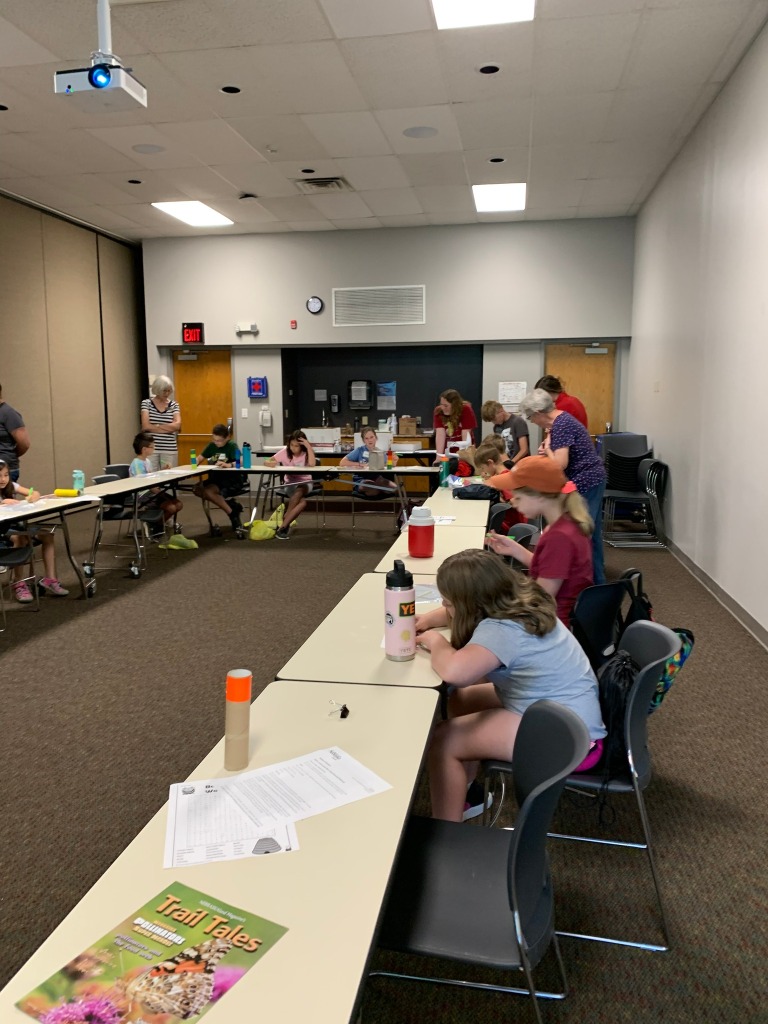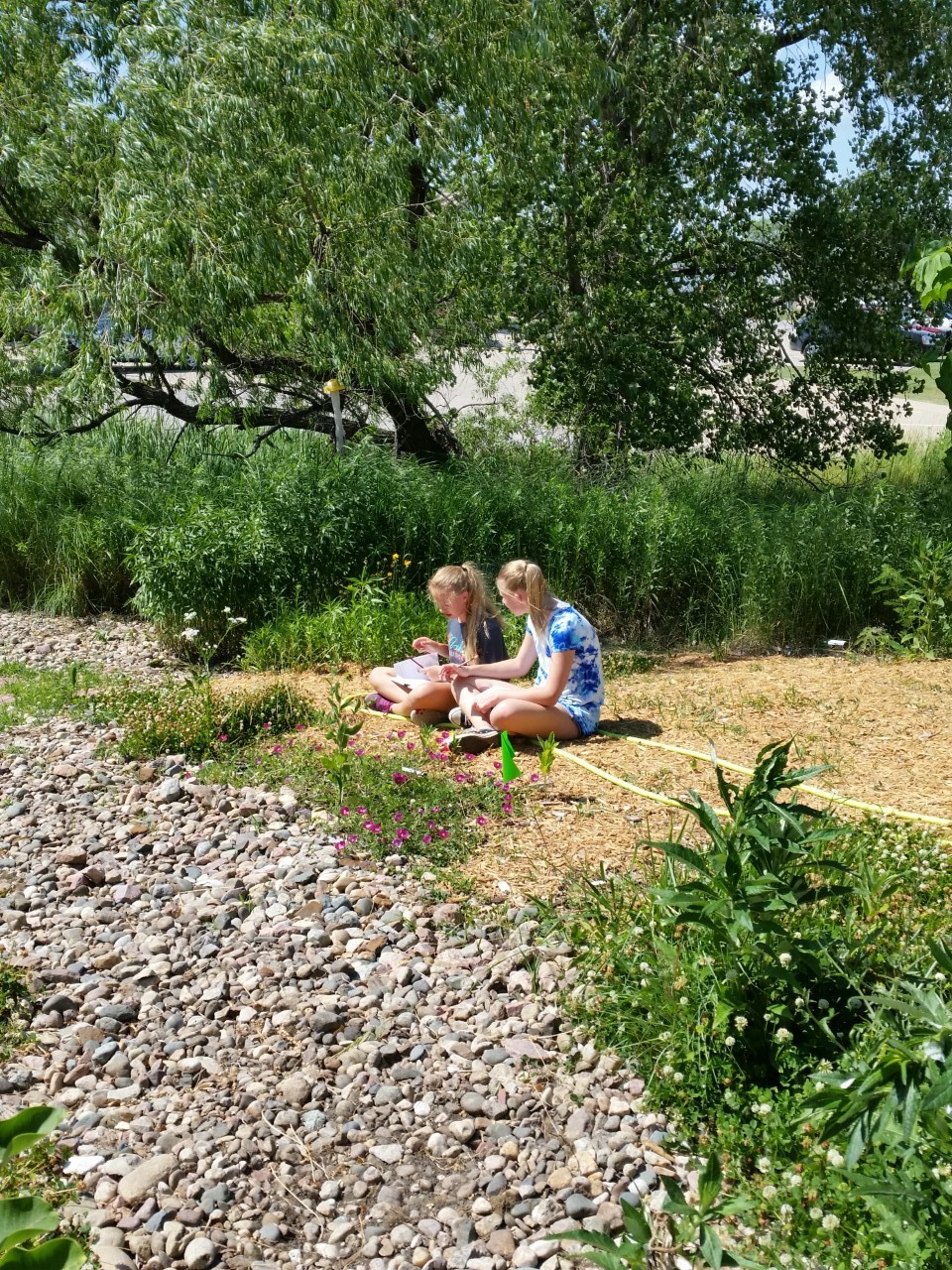Native bees are important pollinators. Some native bees, like leaf cutter bees and mason bees, nest in hollow plant stems. You can help native solitary bees by providing a man-made bee nest. The kids that attended my Clover College workshop last week made these bee nests. They had a fun time and this would be easy for your family to make for Pollinator Week.
Supplies
1 ¾ inch plastic lid from juice container
Paper towel tube cut to 7 inches in length (we use the tube from automated paper towel dispensers) If you use a regular sized paper towel tube, the plastic juice container lid will need to be 1 ½ inches.
Paper drinking straws cut to 6 inches in length
Mason bee tubes (optional)
Duct tape
Zip ties or twine

Bee Nest supplies: paper towel tube, plastic lid, paper straws and duct tape.
Instructions
Push the juice container lid into the cut end of the paper towel tube. It should fit snuggly. The nesting tube needs to have one end closed off or the bees will not be able to nest in the tube.
Place the paper straws and/or mason bee tubes in the paper towel tube and push them back so they are snug against the juice lid. Place enough paper straws inside until they are snug and will not fall out.

Paper straws inserted into paper towel tube and pushed snug to the back.
Cover the outside of the paper towel tube with duct tape. This will help keep the bee nest water proof and last longer.
Place your bee nest outside in your landscape with the nest positioned horizontally. The opening should face south or southeast. Put the nest approximately 2-4 feet above the ground. Use two zip ties or twine to attach the bee nest to a post or fence. You could also attach it to a building, tree or large shrub. Wherever you place the bee nest, make sure it is securely attached and level.

Place your bee nest outside in your landscape with the nest positioned horizontally. The opening should face south or southeast.
Female native solitary bees will nest in the bee tube during the spring and summer. The immature bees will over winter in the tube and emerge as adults next spring. Leave the bee nest in place for approximately two years. Replace the bee nest when all the bees have emerged.
MJ Frogge










 Today I started flower and herb seeds under grow lights. Growing your own transplants is a great way to add annuals, perennials and herbs to your landscape for pollinators. I started basil, parsley, borage, salvia, tithonia and calendula.
Today I started flower and herb seeds under grow lights. Growing your own transplants is a great way to add annuals, perennials and herbs to your landscape for pollinators. I started basil, parsley, borage, salvia, tithonia and calendula.

















